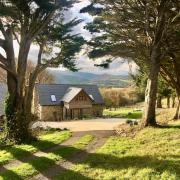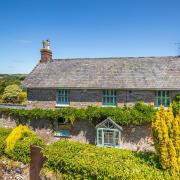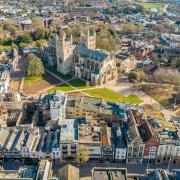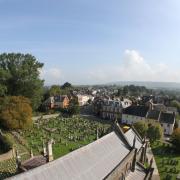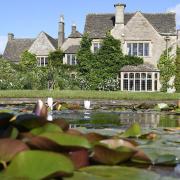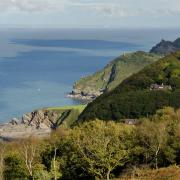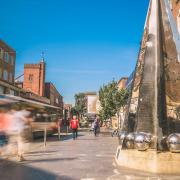Over 60 years ago The Exmoor Society was formed, Philip Dalling finds out more about the group’s fight to preserve the national treasure

The arrival of summer and the gradual relaxation of lockdown brought visitors flocking back to Exmoor to enjoy once again its spectacular scenery, abundant wildlife and a sense of isolation far different and much more acceptable than that imposed by the Covid-19 virus.
Yet few of the thousands who hurried to make or renew acquaintance with the National Park after many weeks of frustrating close confinement would have realised just how difficult and prolonged was the struggle to preserve Exmoor for their enjoyment.
Now the Exmoor Society, which has fought heroically to preserve the moor since its foundation in 1958, has published a new account of the turbulent but ultimately fulfilling chapters not only of its own history but also that of the wider conservation movement.
The author of Saving the Splendour is journalist Philip Dalling, who for many years covered the life and times of Exmoor in a monthly column for Devon Life, entitled Man on the Moor.

Devon can claim just a third of the National Park’s area, compared to neighbouring Somerset, but the county punches well above its weight. The North Devon portion contains the grandest coastal scenery and, in Lynton and Lynmouth, the largest settlement.
And above all, North Devon has an incontestable claim to have inspired the successful campaign to save Exmoor’s iconic central plateau, The Chains, a struggle which led directly to the foundation of the Exmoor Society in 1958.
A Forestry Commission plan to cover The Chains with regimented lines of conifers horrified Barnstaple general practitioner, Dr Richard Harper, who with wife Margery, local teachers Brian and Mary Chugg and other moorland enthusiasts, set out to thwart the scheme.
Mary Chugg, the group’s only surviving member, vividly recalls her reaction to the conifer scheme: “Although I was very young at the time, I could see that it was an absolutely barmy idea to plant conifers in magnificent rolling landscape, creating a dark blanket over the moor.”

She took a petition into Barnstaple’s Pannier Market. “For the first time in my life I had to stand up publicly for the views I cherished. It was not always easy to get the point across. When I talked about how The Chains would be covered by trees some people replied by saying that they liked trees. I had to explain that the ones proposed were the wrong kind of trees!”
Exmoor was designated a National Park in 1954 but few people in the area welcomed the move. Devon and Somerset County Councils and many other bodies opposed the idea, afraid that they would lose planning and other powers. A compromise solution produced a complicated committee system that hamstrung the Park authority and led to much conflict between the authority and landowners on one hand and the Society on the other.
Read more: The healthy honey from bees foraging on Exmoor heather
But throughout the years when it had to fight to prevent acres of moorland being lost to the plough, the Society always stayed positive, constantly proposing sensible alternatives to policies it opposed, and recruiting experts in the conservation field to support its case.
It commissioned land use and ownership maps of the National Park and this led to a Government commission, led by Lord Porchester, to investigate the best uses of land on Exmoor. Many positive measures stemmed from Porchester’s report, leading to agri-environment schemes that helped conserve the moorland.
An incident at Exmoor House, headquarters of the National Park Authority, has passed into legend as an example of the often bitter conflict between the powers-that-be and the Society. Police were called to eject the Society chairman, who objected forcibly - if unsuccessfully - to the exclusion from an important meeting of press and public.
Victor Bonham-Carter, a leading figure in the Society’s history, later recalled: “There were fierce arguments on both sides, a lot of bad feeling and the assumption that the Society was a bunch of up-country outsiders interfering in other people’s business.”
An event in 2019 indicated the Society’s key role in Exmoor life. The 70th anniversary of British National Parks was a joyful occasion hosted jointly by the National Park Authority, the Society and Exmoor Hill Farming Network, and was attended by HRH The Prince of Wales and The Duchess of Cornwall.
Today the relationship between Society and Park Authority is one of co-operation. Exmoor Society chairman Rachel Thomas explains: “There undoubtedly will be future challenges to Exmoor and the Society will continue to be a champion, vigilant watchdog and a critical friend of the Park Authority.”
Saving the Splendour (Exmoor Society £9.99 ISBN 978-1-9997330-4-9) is available from the Exmoor Society .
Have you joined the Devon Life Facebook page yet?




